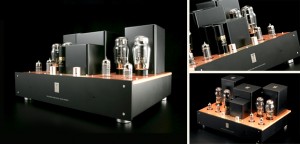
So do you think there’s a phenomenon where tube amps seem to be rated higher than solid-state amps for the same output? First, power ratings can be very misleading. For example, you have to double the power to get a 3 decibel increase in sound. Say if 5 watts would give a sound level of 60 db, it would take 10 watts to produce 63 db, 20 watts for 66 db, 40 watts for 69 db, 80 watts for 72, 160 watts for 75, 320 watts for 78 db, etc. So 1,000+ watt amps used at concerts are not at all overkill. The same analogy is true with cars, if a 100 hp car will do 100 mph, a 500 hp will not do 500 mph – maybe 140. Yes it will reach 100 mph faster but that’s all.
Also, the methods used to determine power outputs are a little suspect, not unlike automobile engines were before 1971. A close read of the specs of a 1000 watt amplifier might reveal that it really puts out only 250 watts into an 8 ohm speaker. That 1000 watts was at 2 ohms, or unloaded, or whatever, no one knew how manufacturers did their testing.
Tube amps are often driven at maximum output or even pushed a bit over so they then achieve a pleasant distortion. An overdriven solid-state amp does not work as well, so they are usually designed to be used well under maximum output. Distortion can be added though either on board or external effects. Obviously this is not quite the same sound as an overdriven tube. This is why many audiophiles are willing to pay a premium for tube amplifiers that use 50 + year old technology for a “warmer”, “fuller” sound.
In conclusion, tube amps are cool. I’ve used tubed gear since getting into audio in the mid 70′s and even back then thought the sound was more to my liking than solid state. They each have a different sound, especially when pushed hard. Transistors are more practical, more reliable, and can produce huge amounts of power with relative little weight or money. There is clearly a place for both in today’s musical world and for the vast array of speakers in today’s market.
